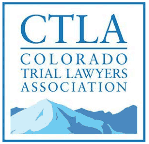Request a Free Consultation | No Upfront FeesSe Habla Español
970-225-2190 |
1-800-664-3151
How to Protect Yourself with the Right Auto Insurance Coverage
Colorado Attorneys Give Legal Advice on How Best to Insure Your Car
Protect Yourself Before You Get Into an Accident
In our experience, many individuals who are injured from motor vehicle accidents (MVAs) occurring within Colorado are not properly insured. Consequently, these injured victims suffer unnecessarily, because they do not have a way to get the best medical treatment necessary to recover from their injuries, or they suffer financially due to not being able to recover their lost earnings before their rent or car payments are due. To properly insure yourself against the unforeseen consequences of a MVA (and potentially other types of personal injuries), we encourage you to purchase more insurance than the minimum required by the State of Colorado.
Colorado Requires a Minimum Amount of Insurance:
The State of Colorado requires all drivers to have a minimum amount of liability insurance equaling $25,000. If you fail to insure your vehicle in this manner, you may be subject to criminal prosecution. However, complying with the minimum coverage requirements will likely not protect you adequately if you are injured in a MVA. Furthermore, if you injure another party in a MVA as a result of your negligence, the minimum coverage requirements will not protect the victim adequately, thereby potentially obligating you to pay money out of your own pocket for damages the victim suffers in excess of $25,000. Furthermore, purchasing the state minimum does not provide any medical benefits or cover your financial losses if you are injured. Therefore, we strongly encourage you to purchase insurance coverage in excess of the state minimum requirements.
Purchasing Additional Coverage Is Not That Expensive:
The initial $25,000 in liability insurance will account for the lion’s share of your insurance premium. Purchasing additional insurance coverage options as part of your auto insurance may only increase your total premiums slightly. Of course, the more coverage you purchase, the more it will cost. So, for example, increasing your liability coverage from $25,000 to $50,000 would not double the cost of your insurance premium, even though you get twice the insurance. Consider the following hypothetical based upon rates in effect in March 2009 for a typical 40-year-old, single female with decent credit and no accidents or violations. Please note this example indicates how inexpensive it is to increase overall coverages. Actually putting higher liability limits on your policy will also usually place you in a higher tier, which could lower your total overall premium.
Bodily Injury Liability (per person/per accident/property damage)
| min/CO State Law | Minimum Limits | Higher Limits | |
| 25,000/50,000/15,000 | $114.87 | $43.06 | $32.63 |
| 50,000/100,000/50,000 | $120.51 | $69.32 | $52.54 |
| 100,000/300,000/100,000 | $127.45 | $81.38 | $61.68 |
| 250,000/500,000/100,000 | $134.40 | $94.72 | $71.80 |
Medical Payments (MED-PAY)
 $5,000
$5,000 $10,000
$10,000 $25,000
$25,000 $50,000
$50,000
UM/UIM
 25,000/50,000 $66.94
25,000/50,000 $66.94 50,000/100,000 $88.36
50,000/100,000 $88.36 100,000/300,000 $106.43
100,000/300,000 $106.43 250,000/500,000 $126.51
250,000/500,000 $126.51
Please note that this is simply an example. Actual insurance premiums will vary depending upon insurance company and individual risk characteristics.
Your Insurance Agent May NOT Have Incentive To Sell You Enough Insurance:
Some insurance companies provide financial incentives (e.g. bonuses) to their insurance agents to sell you less insurance than you need. Do not be deceived by the slogans you hear on TV (“Like a good neighbor,” “You’re in good hands,” etc.). Remember that insurance companies are in the business of making a profit at your expense. Insurance carriers profit by maximizing the number of premiums they collect and minimizing the number and amount of claims they pay out by selling you the state minimum in coverage. A carrier is going to only collect slightly more money selling you $50,000 in coverage versus $25,000, but their risk is twice as much. Consequently, the carrier has little incentive to sell you more insurance. So when you go to your agent, you need to be informed on what you need, and insist on purchasing more insurance than they are likely recommending. For these reasons, we recommend using an independent insurance broker instead of a captive agent to procure your insurance. A broker is not an employee of the insurance company. Rather, a broker has access to various different insurance companies and can shop for the best policy. Sandra Squires (970.377.0638 / sandra@squiresinsurance.net) and Josh Fyhrie (970.204.0044 / josh@ciadvs.com) are insurance brokers who can assist you.
Your Income and Net Worth Dictate the Amount of Coverage You Need:
The more income you make, the greater financial risk you have if you are in a MVA. The more assets you have, the more insurance you’ll need to protect those assets if you cause a MVA. It’s similar to the saying: “The higher you go, the further you can fall.” For example, if you make $100,000 per year, and you are unable to work for one year following a MVA, you will lose $100,000 in earnings, in addition to incurring medical bills and pain and suffering. If the party who caused the accident only has the state minimum coverage of $25,000, you might only recover $25,000 if the at-fault driver does not have significant assets to seize and collect upon. This hypothetical victim should have purchased underinsured motorist (UIM) coverage. Here is another example. Let’s say you have a net worth of $500,000, and you cause a MVA resulting in the victim suffering $250,000 in damages. If you have the state minimum coverage of $25,000, then your liability insurance will pay $25,000 to the injured victim, and you will be personally liable for the remaining $225,000 of damages. The injured victim could potentially seize your assets to collect the rest of his damages. Therefore, you would have needed more liability coverage to protect your assets.
How Should I Protect Myself?
You should protect yourself in cases where you are the victim by having enough insurance to replace all of your damages. You should also protect your assets if you cause injury to another person in a MVA. Here are the different types of insurance coverages you can purchase to protect yourself and your assets:
Liability:
Liability coverage, also referred to as Bodily Injury Liability and Property Damage Liability, protects you and your assets if you cause another person’s injury in a MVA. This coverage will go towards the injured person’s injuries, property damages, and/or settlement if you are the one deemed at fault and are held liable. The more assets you have, the more liability coverage you should have. If you have $500,000 in assets, you should have $500,000 in liability coverage.
Umbrella:
An umbrella policy will provide additional liability insurance protection above and beyond your liability coverage associated with personal homeowner’s and your personal auto insurance. Typically, individuals or families with high net-worth should have umbrella coverage. You can also purchase umbrella coverage to protect your business and business-related liabilities. We recommend conferring with an insurance broker for more detailed information on umbrella policies.
Uninsured Motorist (UM) / Underinsured Motorist (UIM):
Uninsured motorist (UM) coverage provides protection to you if an uninsured driver causes you to be injured in a MVA. Because the uninsured driver has no insurance to collect from, you can recover damages from your UM coverage up to the amount of UM coverage that you purchased. Underinsured motorist (UIM) coverage provides settlement funds to you if a driver having insufficient coverage causes you to be injured in a MVA. For example, if a driver having $25,000 in liability coverage causes you $100,000 in damages, you will only be able to recover $25,000 in damages if you do not have underinsured motorist (UIM) coverage. However, if you have UIM coverage, then you will be able to collect the remaining $75,000 in damages from your own UIM coverage. Therefore, the more income you earn, the more uninsured/underinsured motorist coverage you’ll need. Uninsured motorist (UM) and underinsured motorist (UIM) coverage is not required by Colorado state law, so you will have to ask your insurance agent or broker for this additional coverage. Typically, your liability coverage amount or limit will match your uninsured/underinsured motorist coverage. So for example, if you purchase $500,000 in uninsured/underinsured motorist coverage, you will also receive $500,000 in liability coverage.
Med-Pay:
Med-Pay insurance pays for medical expenses incurred as a result of auto accidents. Your Med-Pay insurance covers the driver and passengers in your covered vehicle but does not cover the occupants of the at-fault driver’s vehicle. Med-Pay coverage is essential if you do not have health insurance. Med-Pay is highly beneficial even if you do have health insurance, as Med-Pay covers medical expenses that are often not covered by health insurance and also may be used to pay health insurance co-pays and deductibles. Beginning January 1, 2009, Colorado auto insurers must offer at least $5,000 in Med-Pay coverage. If the insurer does not make that offer, then you will automatically have $5,000 in Med-Pay coverage. You may purchase higher amounts of Med-Pay coverage, or you may “opt out” of Med-Pay coverage by executing a waiver of such coverage. To be adequately protected, you should not opt out of Med-Pay coverage but should purchase the most Med-Pay coverage that you can afford. If you make a claim against the at-fault driver’s liability insurance and recover damages, then your Med-Pay insurer may seek reimbursement for the medical expenses that it paid on your behalf. This is called “subrogation.” Med-Pay insurers may seek subrogation on policies issued prior to January 1, 2009 but are prohibited by law from seeking subrogation on policies issued on or after January 1, 2009 for accidents that happened on or after January 1, 2009. Also beginning January 1, 2009, Med-Pay insurers must reserve $5,000 for the payment of the medical expenses of ambulance services, trauma physicians, and trauma centers incurred within thirty days after initial notice to the insurer of the auto accident. After the thirty day period, all the Med-Pay coverage is available to pay any auto accident related medical bill. The recipients of medical care are always personally responsible for the payment of medical care that they have received, despite the fact that someone else negligently caused the injuries and the need for the medical care. The at-fault driver’s liability insurer will not pay your medical expenses as they are incurred. If your medical expenses are not timely paid, then your medical providers may take collection actions against you. Therefore, it is imperative to have Med-Pay if you do not have health insurance. Hoggatt Law Office, P.C. will assist you in coordinating and maximizing the benefits available to you through all coverages: liability, uninsured motorist, underinsured motorist, Med-Pay, health insurance, disability, and all other sources of coverage.
Health Insurance:
Having adequate health insurance is probably the most important insurance you can have to protect yourself in a MVA. If another person causes your injuries in a MVA, their liability insurance company is not going to pay your medical bills (nor your lost wages for that matter) as they are incurred. Rather, the liability insurance carrier may pay you a one-time settlement which should take place after you have incurred the medical expenses and after you are done receiving medical treatment (and before the applicable Statute of Limitations. Contact Hoggatt Law Office, P.C. to find out what the Statute of Limitations is in your case). The problem arises when you have medical bills coming in, and you have no way to pay for them until you settle. Liability insurance companies will try to offer you a small amount of money to settle your case soon after the accident, but taking this money early on is typically a bad idea. However, if you do not have any health insurance, and you have no way to pay your medical bills, then you may be tempted to accept this money to your detriment. Unfortunately, if you accept the settlement early, and you end up having a lot of medical bills afterward, you have no way of recovering those additional damages, because you have already released the person who caused your accident and their liability insurance carrier. If you have health insurance, then you will have a way to pay your medical bills, and you can wait for the appropriate time to settle your case. If you do settle your case, there is a strong probability that you will have to repay your health insurance carrier out of your settlement. This process is called subrogation and is extremely complicated. Involving legal counsel to minimize the amount you have to repay is highly recommended and customary.
Wage Loss/Disability Insurance:
Some automobile insurance companies will allow you to purchase additional coverage to replace the earnings you lose as a result of a MVA. We highly recommend purchasing this coverage. If your automobile insurance company does not provide this coverage, you can purchase separate disability insurance to replace wage loss. The most well-known type of disability insurance is AFLAC, which you have seen advertised on TV. However, you should definitely shop around for the best disability insurance that serves your needs before simply purchasing AFLAC. What may work well for an ironworker or a carpenter may not be the best policy for an accountant or an engineer. Contact an insurance broker for an expert opinion on which disability policy best fits you. Many employers offer disability insurance to their employees. So if this is an option for you, then you should definitely purchase it and continue the coverage after your employment ends. If you are injured, file a claim immediately before your employment ends; otherwise, you may lose coverage if you get laid off. Also, there are short-term disability (STD) and long-term disability (LTD) policies. Short-term disability policies will only cover wage loss up to the first few months (the term is dictated by each respective insurance policy). Therefore, it is a good idea to purchase both a short-term policy and a long-term disability policy. Quite often, the short-term disability policy and long-term disability policy are packaged together, but not always.

970-225-2190 | 1-800-664-3151
1403 W. 29th St.,
Loveland, Colorado 80538
Greeley:
3835 W. 10th Street, Unit 100,
Greeley, Colorado 80634|
970-460-2220
Longmont:
2204 18th Ave, Suite 123,
Longmont, Colorado 80501|
720-575-0509
Boulder:
4450 Arapahoe Avenue, Suite 100,
Boulder, Colorado 80303|
303-997-2018
Ft. Collins:
123 North College Ave., Suite 160,
Fort Collins, CO 80524|
970-225-2190
Cheyenne:
109 E. 17th St., Suite #6148,
Cheyenne, WY 82001|
307-227-4051 (By Appointment Only)















